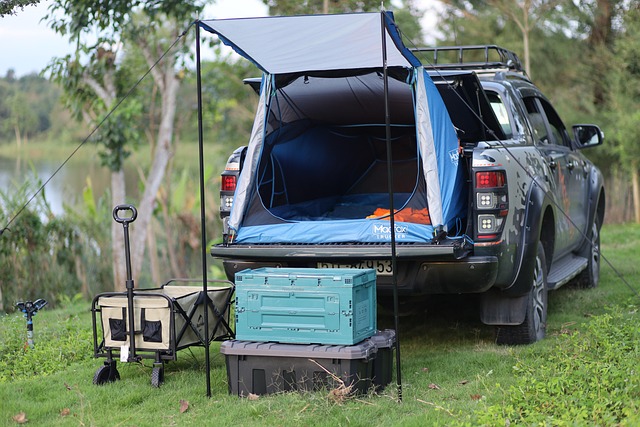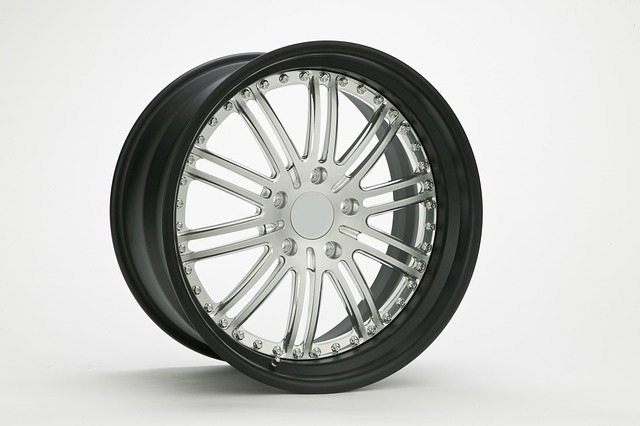Looking to register your car in California? This comprehensive guide walks you through the entire process, from understanding key steps to gathering essential documents. We break down how to verify your vehicle’s crucial VIN (Vehicle Identification Number), complete registration applications, and pay fees for a seamless experience. By following these clear instructions, you’ll be on your way to securing your vehicle’s legal status in California efficiently and correctly.
- Understanding the Registration Process
- Gather Required Documents
- Verify the Vehicle's VIN (Vehicle Identification Number)
- Complete the Registration Application
- Pay Registration Fees and Obtain License Plate
Understanding the Registration Process

Registering a car in California involves a straightforward process, but understanding each step is crucial to ensure a smooth experience. The first and most vital aspect is verifying your vehicle’s unique identifier—the Vehicle Identification Number (VIN). This 17-character code is like a fingerprint for your car, providing essential details about its make, model, year, and manufacturing location. A reliable method for this verification is through mobile VIN services, which allow you to quickly check the VIN accuracy by entering or scanning it into a specialized app.
Using a mobile VIN verifier ensures convenience as it eliminates the need for visiting a dealership or DMV office. This service can be particularly beneficial when purchasing a used car, as it helps verify the vehicle’s history and ensures it matches the seller’s claims. With just a few clicks or taps, you can gain peace of mind knowing that your new (or used) California-registered vehicle is genuine.
Gather Required Documents

Before you begin the registration process, make sure to gather all the essential documents. California requires a variety of paperwork when registering a vehicle, ensuring that every detail is accurate and up-to-date. The key document you’ll need is the Vehicle Identification Number (VIN) verifier, which can be obtained through a mobile VIN verification service or by visiting a local DMV office. This process involves a detailed inspection of your car’s VIN, providing proof of its authenticity and history.
Additionally, prepare other necessary materials such as the title certificate, registration forms, proof of insurance, and valid identification documents like a driver’s license. For a hassle-free experience, consider using mobile VIN verifier apps that can assist with this step by remotely verifying your vehicle’s details, making it convenient and efficient to get your car registered in California.
Verify the Vehicle's VIN (Vehicle Identification Number)

Before you begin the registration process, it’s crucial to verify your vehicle’s VIN (Vehicle Identification Number). This unique 17-character code is a critical piece of information for identifying your car and ensuring its history is accurately represented. A reliable vin verifier, whether it’s a mobile vin inspection or an online tool, can help you cross-check the VIN against databases to uncover any hidden issues or previous accidents that might affect the registration.
Using a mobile vin verifier app is a convenient way to validate your vehicle’s authenticity. These apps provide instant access to detailed vehicle history reports, including maintenance records and odometer readings, allowing you to make informed decisions before committing to the registration process. This step is particularly important in California, where strict regulations require thorough verification to maintain the integrity of its transportation network.
Complete the Registration Application

To begin the registration process, you’ll need to complete the Registration Application form. This crucial step involves providing detailed information about your vehicle, including its make, model, year, and unique Vehicle Identification Number (VIN). The VIN is a vital piece of data that serves as a fingerprint for your car, ensuring accuracy in the registration process. Consider utilizing a reliable vin verifier to ensure the VIN’s authenticity and accuracy.
Once you’ve secured the correct VIN, accurately inputting it into the form is essential. This allows the California Department of Motor Vehicles (DMV) to cross-reference and verify your vehicle’s details, streamlining the registration procedure. Additionally, if you’re opting for a mobile vin inspection or mobile vin verifier service, this step becomes even more convenient as professionals can perform an on-site VIN check, saving you time and effort.
Pay Registration Fees and Obtain License Plate

After completing your vehicle’s registration application, it’s time to settle the fees. In California, the cost of registering a car varies based on several factors including the type and weight of your vehicle. You can typically pay for registration online, by phone, or in person at a DMV office. Once registered, you’ll need to obtain license plates for your car. These plates will be issued after verifying your Vehicle Identification Number (VIN) through a process like a mobile VIN inspection or in-person at the DMV.
Remember that having accurate and up-to-date information is crucial for both the registration process and ensuring your vehicle’s safety. Utilizing services like mobile VIN verification can simplify this step by allowing a professional to perform a remote VIN inspection, saving you time and effort.
Registering a car in California is a straightforward process that requires attention to detail. By understanding each step, gathering all necessary documents, and utilizing tools like a VIN verifier, you can ensure a smooth registration experience. Remember to complete the application accurately, pay the required fees, and obtain your license plate to legally operate your vehicle on California roads.



